Morning Eye Candy: Prickled
Posted in Around the Garden, Photography on February 21 2013, by Matt Newman
Pinus parvifolia ‘Brevifolia’ — Photo by Ivo M. Vermeulen

Inside The New York Botanical Garden
Posted in Around the Garden, Photography on February 21 2013, by Matt Newman
Pinus parvifolia ‘Brevifolia’ — Photo by Ivo M. Vermeulen
Posted in Photography on February 20 2013, by Ann Rafalko
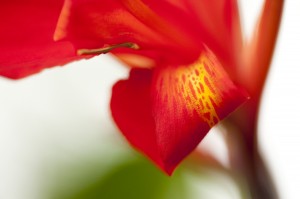 The photographs in the Tropical Paradise Photography Contest keep getting more beautiful and the judging process keeps getting more difficult.
The photographs in the Tropical Paradise Photography Contest keep getting more beautiful and the judging process keeps getting more difficult.
Thank you to everyone who tried their hand at shooting some Sense of Place photographs! This category was really tough to judge this week, as there were so many beautiful, imaginative shots. Keep up the great work! We love seeing the Conservatory in new ways.
Think you can do better? Then let’s see it! Entering is easy–simply upload your pictures to Flickr (please limit it to your very best photographs taken inside the Conservatory during Tropical Paradise), add them to our Group Pool, tag them with #tropicalparadise, and then sit back and hope we pick your pix! And don’t think that just because you’re snapping with an iPhone, you can’t take part–all skill and equipment levels are welcome to participate.
Alright, let’s get inspired by this week’s crop of tropical beauty!
Posted in Around the Garden on February 20 2013, by Lisa Vargues
Lisa Vargues is a Curatorial Assistant with the NYBG’s Steere Herbarium.
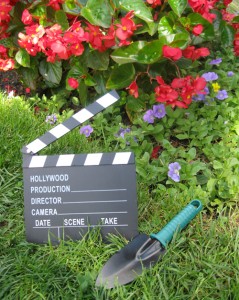 As springtime quietly lingers around the corner, the 85th Academy Awards ceremony also draws near. While we wait for both the red carpet and springtime flowers to unfurl, this is an ideal opportunity to consider some garden-focused movies, as well as the connection between horticulture and film-making.
As springtime quietly lingers around the corner, the 85th Academy Awards ceremony also draws near. While we wait for both the red carpet and springtime flowers to unfurl, this is an ideal opportunity to consider some garden-focused movies, as well as the connection between horticulture and film-making.
Have you ever found yourself watching films with a “botanical eye,” ogling the scenery; zeroing in on flowers in the set; or perhaps debating the name of a plant in a fleeting scene? Presumably, many garden enthusiasts have this inclination. Whether we are conscious of it or not, greenery (simple or grand-scale) is frequently an essential ingredient in shaping the atmosphere of film scenes.
Credit for the green on the silver screen often goes to the Greensman (a.k.a. the Greensperson), depending on the production arrangement. Working with the Art Department as a type of set dresser, this is the professional who typically locates, arranges, and maintains the necessary foliage and flowers (real and artificial), as well as other landscaping elements, for film sets. If a large amount of greenery is needed for a film, a greens team is utilized, as in Peter Jackson’s Lord of the Rings trilogy, which included a Greensmaster for its elaborate, naturalistic scenery.
Posted in Bill Buck, From the Field, Science on February 20 2013, by William R. Buck
January 11, 2013, Prov. Antártica Chilena, Comuna Cabo de Hornos, Parque Nacional Alberto de Agostini, Isla Grande de la Tierra del Fuego, NE-most arm of Seno Courtenay, 54°34’34”S, 71°10’41”W
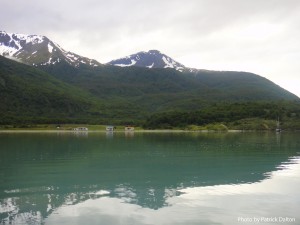 The night ends early and abruptly. Right after 1:30 a.m. we hit a very rough stretch of seas where we have to cross–perpendicular to the wind and waves–a large stretch of open, rough water just south of Cape Froward (the southernmost tip of continental South America). At first the ship is tossed into the air and banged back down into the sea, awakening everyone. Our little ship, a mere 60 × 20 feet, tosses about for hours on end. Anything not tied down or already on the floor is soon there.
The night ends early and abruptly. Right after 1:30 a.m. we hit a very rough stretch of seas where we have to cross–perpendicular to the wind and waves–a large stretch of open, rough water just south of Cape Froward (the southernmost tip of continental South America). At first the ship is tossed into the air and banged back down into the sea, awakening everyone. Our little ship, a mere 60 × 20 feet, tosses about for hours on end. Anything not tied down or already on the floor is soon there.
Quite reasonably, the crew closes the door to the bunk room so waves won’t slosh down the ladder. However, this makes the room quite warm and increases the prospects of seasickness. And then, just like that, around 4:15 a.m. it all stops; I feel a cool breeze and the seas calm. Most of the group, exhausted from fighting to stay in our bunks and not get sick (some more successfully than others) fall swiftly back to sleep. Unfortunately it is to be a short reprieve.
Posted in Around the Garden, Photography on February 20 2013, by Matt Newman
Even if Punxsutawney Phil had seen his shadow this year, I still trust the snowdrops to give me that all-too-necessary early spring pat on the back.
Photo by Amy Weiss
Posted in Bill Buck, From the Field, Science on February 19 2013, by William R. Buck
Ed. note: NYBG scientist and Mary Flagler Cary Curator of Botany, Bill Buck has just returned from his annual expedition to the islands off Cape Horn, the southernmost point in South America, to study mosses and lichens. For the past two years he was able to file stories from the field, but this year’s locations proved so remote he was forced to wait until his return. We will be publishing them over the course of several days.
January 10, 2013, Punta Arenas, Chile
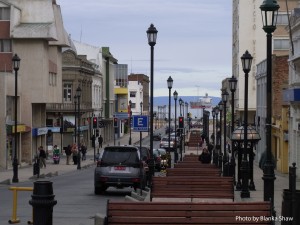 The waiting is finally over. I arrive here Sunday evening after a grueling 36 hour trip from my home in New York. The trip is always horrible with inevitable long layovers, a 9+ hour international flight, an an additional 4-5 hour flight down to Punta Arenas. It seems somehow unjust after enduring that long flight to then be crammed into an Airbus 320 with scarcely enough leg room for someone significantly shorter than me.
The waiting is finally over. I arrive here Sunday evening after a grueling 36 hour trip from my home in New York. The trip is always horrible with inevitable long layovers, a 9+ hour international flight, an an additional 4-5 hour flight down to Punta Arenas. It seems somehow unjust after enduring that long flight to then be crammed into an Airbus 320 with scarcely enough leg room for someone significantly shorter than me.
I meet up with Juan Larraín (of previous trips) who is now a post-doctoral student at the Field Museum in Chicago. Juan has already been in Chile for a few weeks to visit his family over the holidays. I hardly recognize him because he has shaved his beard since I saw him last, but he hasn’t shrunk and so is still at least a head taller than most Chileans. I had asked Juan to arrive in Punta Arenas a day earlier than everyone else so he and I could start preparations for this year’s expedition. Additionally, we are welcomed to Punta Arenas by our old friend Ernesto Davis, who also acts as our local facilitator.
Posted in Around the Garden, Gardening Tips on February 19 2013, by Sonia Uyterhoeven
Sonia Uyterhoeven is the NYBG‘s Gardener for Public Education.
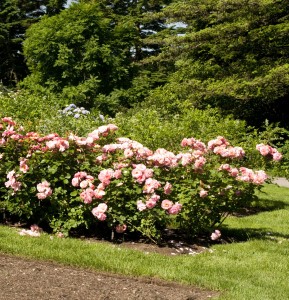 Salt damage after coastal storms is not uncommon. Coastal gardeners will notice an appreciable amount of burn on their lawns and their ornamental beds after a storm, damage which will generally be more prominent on the windward side of the garden. Foliage will look desiccated and brown and you will discover that leaf buds have either been killed or are slow to leaf out in the spring.
Salt damage after coastal storms is not uncommon. Coastal gardeners will notice an appreciable amount of burn on their lawns and their ornamental beds after a storm, damage which will generally be more prominent on the windward side of the garden. Foliage will look desiccated and brown and you will discover that leaf buds have either been killed or are slow to leaf out in the spring.
If salt damage has affected large areas of your garden and plants are wilting, growth is stunted, or buds are slow to break in the spring, then it is worth getting a salinity test for your soil. It is possible that the roots were damaged from increased levels of salt water, or the soil has excess adsorbed sodium which is preventing the plant from taking up nutrients and water.
Last week we discussed how to take a soil sample in your garden, while this week we will focus on gardeners who were affected by Super Storm Sandy. For coastal gardeners who experienced flooding, requesting an extra test for soil salinity measurements will be important–it measures the amount of soluble salts in the soil. There will most likely be an additional charge for this test, but it is usually fairly reasonable, with most laboratories generally performing an Electrical Conductivity (EC) test to determine the amount of soluble salts.
Posted in Around the Garden, Photography on February 19 2013, by Matt Newman
Photo by Ivo M. Vermeulen
Posted in Around the Garden, Photography on February 18 2013, by Matt Newman
Nope, they won’t all be this easy to spot. But seeing as this is the last day of this year’s Great Backyard Bird Count, take what you can get! Seeing as we’re open on this particular President’s Day, we’ll be tallying up our feathered friends all afternoon. You’ll find “birder headquarters” in the Everett Children’s Adventure Garden. And even if you don’t have binoculars, that’s no excuse to sit this one out–we’ve got a handful of loaner pairs available from the Visitor’s Center.
Photo by Ivo M. Vermeulen
Posted in Around the Garden, Photography on February 17 2013, by Matt Newman
Not all of our aquatic plants retired in early fall. You’ll still find a few beauties floating in the Conservatory as part of our Tropical Paradise exhibition!
Photo by Ivo M. Vermeulen